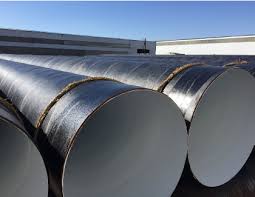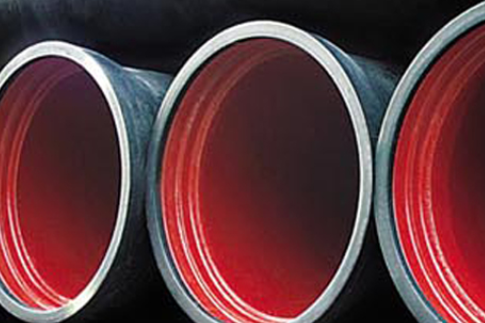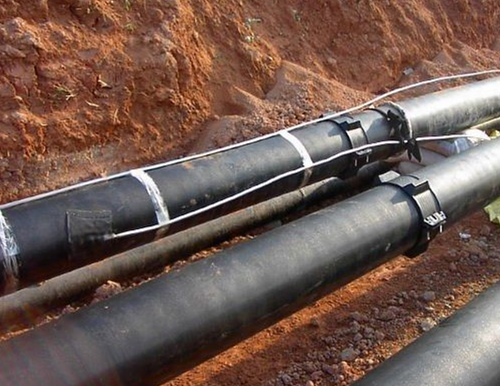Comprehensive Corrosion Protection Methods for Cast Iron Pipes in Water Supply and Drainage Systems
2024-12-19 15:12:19 hits:0
In water supply and drainage systems, corrosion protection for cast iron pipes is crucial because cast iron is prone to corrosion, especially in wet or moist environments such as soil and water. Proper corrosion protection not only extends the service life of cast iron pipes but also ensures the proper functioning of the pipeline system. Below are detailed methods for corrosion protection of cast iron pipes.
1. External Coating Protection
External coatings are one of the most common and effective methods of corrosion protection. By applying protective materials to the surface of cast iron pipes, it is possible to effectively prevent exposure to corrosive elements (such as moisture, oxygen, acids, alkalis, etc.).
a. Epoxy Resin Coating
- Characteristics: Epoxy resin has high corrosion resistance, excellent adhesion, water resistance, and chemical resistance, forming a strong protective layer on the surface of the pipe.
- Application Method: The cast iron pipe surface is usually cleaned and de-rusted, and then epoxy resin is applied. The coating thickness is typically 200-400 microns.
- Effect: Epoxy coating effectively isolates the pipe from corrosive elements in the soil, making it ideal for underground pipelines.
b. Asphalt Coating
- Characteristics: Asphalt is a traditional protective coating material with good water resistance and corrosion resistance, especially effective in environments with abundant moisture or water.
- Application Method: Asphalt coating can be applied to the cast iron pipe surface by spraying, brushing, or immersion.
- Effect: Asphalt coatings are highly resistant to water and oxidation, making them suitable for use in water treatment plants, sewage systems, and other related environments.
c. Polyethylene Coating
- Characteristics: Polyethylene coatings have strong impermeability, effectively preventing contact between the pipe and the external environment, reducing the likelihood of corrosion.
- Application Method: Polyethylene coatings are typically applied through a hot-melt process, forming a dense protective layer on the pipe surface.
- Effect: This type of coating is suitable for pipelines exposed to corrosive soils, seawater, and other harsh environments, significantly extending the service life of the pipes.
2. Internal Corrosion Protection
In addition to external protection, internal corrosion protection is also vital, especially for pipes used to transport sewage or drinking water. Common internal corrosion protection methods include:
a. Cement Mortar Lining
- Characteristics: Cement mortar lining is a common internal protective material with good wear resistance, corrosion resistance, and chemical stability.
- Application Method: Cement mortar slurry is applied to the inside of the cast iron pipe either by spraying or hand application to form a protective layer.
- Effect: Cement mortar effectively isolates the internal fluid from the pipe material, preventing corrosion and scaling.
b. Epoxy Resin Lining
- Characteristics: Epoxy resin lining, similar to external coatings, provides excellent chemical corrosion resistance, especially for drinking water pipelines.
- Application Method: Epoxy resin is applied to the inner wall of the cast iron pipe to form an even protective layer.
- Effect: Epoxy resin lining helps resist chemical substances and microorganisms in the pipeline, thus extending the life of the pipes.
c. Ceramic Lining
- Characteristics: Ceramic lining is highly resistant to wear, corrosion, and high temperatures, making it suitable for handling aggressive chemicals or hot water in the pipeline.
- Application Method: Ceramic materials are applied to the inner surface of the cast iron pipe using a special technique.
- Effect: Ceramic lining provides excellent protection against high corrosion levels, making it ideal for chemically aggressive or high-temperature water transport systems.
3. Selection and Application of Anti-corrosion Materials
Corrosion protection of cast iron pipes also involves the careful selection of materials based on several factors:
- Environmental Corrosiveness: Different environments (such as underground, moist, or highly acidic/alkaline areas) require different anti-corrosion materials.
- Media Transported: The type of medium being transported through the pipeline (water, sewage, chemicals, etc.) affects the choice of anti-corrosion material. For example, drinking water pipelines require materials that are non-toxic and prevent bacterial growth.
- Ease of Construction: Different corrosion protection methods and materials have varying levels of construction complexity. Epoxy resin coatings and cement linings require higher technical standards and construction costs, while asphalt coatings are relatively easier to apply.
4. Cathodic Protection and Electrochemical Corrosion Protection
For pipelines that are particularly prone to corrosion, cathodic protection is an effective method. Cathodic protection works by installing an anode (such as zinc or aluminum) around the cast iron pipe and applying a current to make the pipeline the cathode, thus preventing corrosion.
Application Method:
- Install external protection devices and apply a current to the cast iron pipe to make it the cathode, preventing metal oxidation and corrosion.
Effect:
- Cathodic protection is highly effective in preventing corrosion, especially for underground pipelines.
5. Other Corrosion Protection Measures
- Thermal Spraying: Metal materials (such as aluminum, zinc) are melted and sprayed onto the pipe surface to form a protective layer, providing excellent corrosion resistance.
- Graphite Coating: Suitable for high-temperature environments, graphite coatings offer excellent corrosion resistance under extreme conditions.

 en
en  fra
fra  de
de  ru
ru  gle
gle  th
th  ara
ara  it
it  jp
jp  kor
kor  zh
zh 





